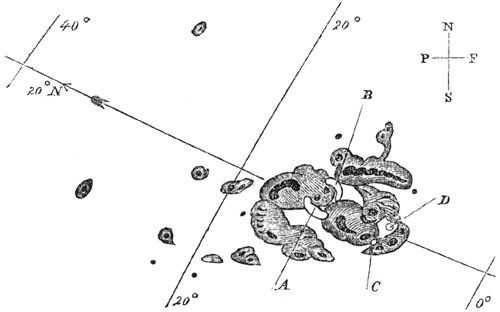Even with the grand instruments of their day, the scientists of Old could barely describe the Charge that wiped out much of life on Earth. According to papers scavenged in Old libraries and laboratories, the Charge was a “geomagnetic storm” that started on August 28.
Most of the world saw the beginning of the Charge as a thing of beauty. The auroras shone brightly, almost to be seen by day in the north. At night, they shone as far south as America, Japan, and even to the Caribbean. Many people thought it was early dawn, but Kew Observatory's magnetograph recorded that something was tampering with the magnetic fields of Earth.
Papers from a man called Richard Carrington suggested that it was the Sun that caused the Charge, spitting off a kind of “solar flare,” an enormous arch of fire that flew out of our star and toward the Earth. He had watched as sunspots and smaller flares boiled from the angry core. Even a great mind like his did not know why.
Telegraph systems were the messengers of our doom. Sparks began to leap from wires and pylons, shooting electricity where there should have been none. Machines became so hot that paper caught fire around them. Even when disconnected, telegraphs typed out nonsense messages, almost as if they were warnings.
Survivors of the Charge say that they felt the air become prickly with static electricity. The sky began to turn red, and the day became hotter than imaginable. People took shelter underground, but only those deep enough in ravines and mines would survive. Judging from census records that escaped the fires of the Charge, some 99% of the human race was dead by the third of September.
Humanity reemerged around mining centers such as California, West Virginia & Pennsylvania, the North of England, Germany, South Africa, China, and Chile. Over the past 150 years, we have repopulated, but few imagine a day when we will match the greatness of civilization, technology, and learning like the Days of Old. For now, as it has been since the Charge, we continue to scavenge what resources we can from Old and feed ourselves with what remains of Mother Nature.
–
In reality, the Carrington Event of 1859 did not destroy life on Earth, though it could have, and did in fact disrupt telegraphy for a few days. Another storm in 1989 knocked out power grids and jammed radio signals, which led NASA and the European Space Agency to jointly launch the Solar and Heliospheric Observatory. Even with our knowledge of solar activity today, we do not understand the many facets of solar weather. A storm such as these could happen with little warning, and, despite our impressive technology, there is nothing we could do to stop it.

We should use the sun to our benefits in places where it's favorable which the government should subsidize solar panels to make them cheaper and affordable to apartments instead of mega corporations getting rich and the poor getting poor.
ReplyDeleteWe should also use space rockets to haul our trash using the sun as a free incinerator to burn millions of liters worth of trash every month.
The rocket will be a one way trip.
That's just the beginnings of innovation if we stop the politicians hijacking our freedoms.
We could also use solar cars with recharging batteries that in sunny climates like California you drive to work using the powers of the sun.
ReplyDeleteWhile the vehicle is motionless it is busy storing energy for nighttime use so you can turn around and go straight home.
The Telsa car uses a battery with a VERY outstanding performance............when it works!
but the dirty secret is you have to charge it at home which means more power plants are needed if we are to be an electric car society as everyone will be plugging their electric cars into the grid every morning.
Electric cars in many ways are more damaging then gazzoline which there are lots under our feet but we are being banned from doing anything about it.
Just even SAYING we will drill without actually doing diddly squat will for a year or two knock gas prices back down quite a bit as speculators speculate.